Global Design: More than canal houses in chic Amsterdam, which turns 750 in 2025
Sign up now: Get ST's newsletters delivered to your inbox

The fortress-like Het Sieraad is a prime example of the Amsterdam School of architecture.
ST PHOTO: SUZANNE SNG
Follow topic:
AMSTERDAM – The Dutch capital may be famous for its crooked canal houses, so often depicted on souvenir magnets and tea towels, but the city’s architecture is far from stuck in the past.
Go beyond the postcard-perfect facades of the Canal District – a Unesco World Heritage Site – to explore striking contemporary structures that defy gravity, the curvaceous brickwork of the Amsterdam School of architecture and the storybook eclecticism of Exoticism.
The city, which blends old and new with ease, is in celebration mode for its 750th birthday on Oct 27 ( amsterdam750.nl/en
Amsterdam’s year-long celebrations include a special opportunity to view the city from above at Nieuwe Kerk, a 15th-century church, which is due for restorations. From May to November, temporary scaffolding has been placed on the roof for visitors who brave the 216 steps to the top.
Another notable event on the jam-packed calendar is the open house of the iconic Beurs Van Berlage on Aug 23. Admire the elegant red-brick former stock exchange – now an events venue – which has influenced architects, including those from the Amsterdam School, since its completion in 1903.
Modern builds
Playful modern buildings which look like a bathtub or a shard of crystal sit comfortably next to centuries-old brick houses in Amsterdam.
The contrast is often stark, but never displeasing to the eye. Clean lines, unusual shapes and clever design make these newcomers to the historic city stand out in bold, creative ways.
Nemo Science Museum
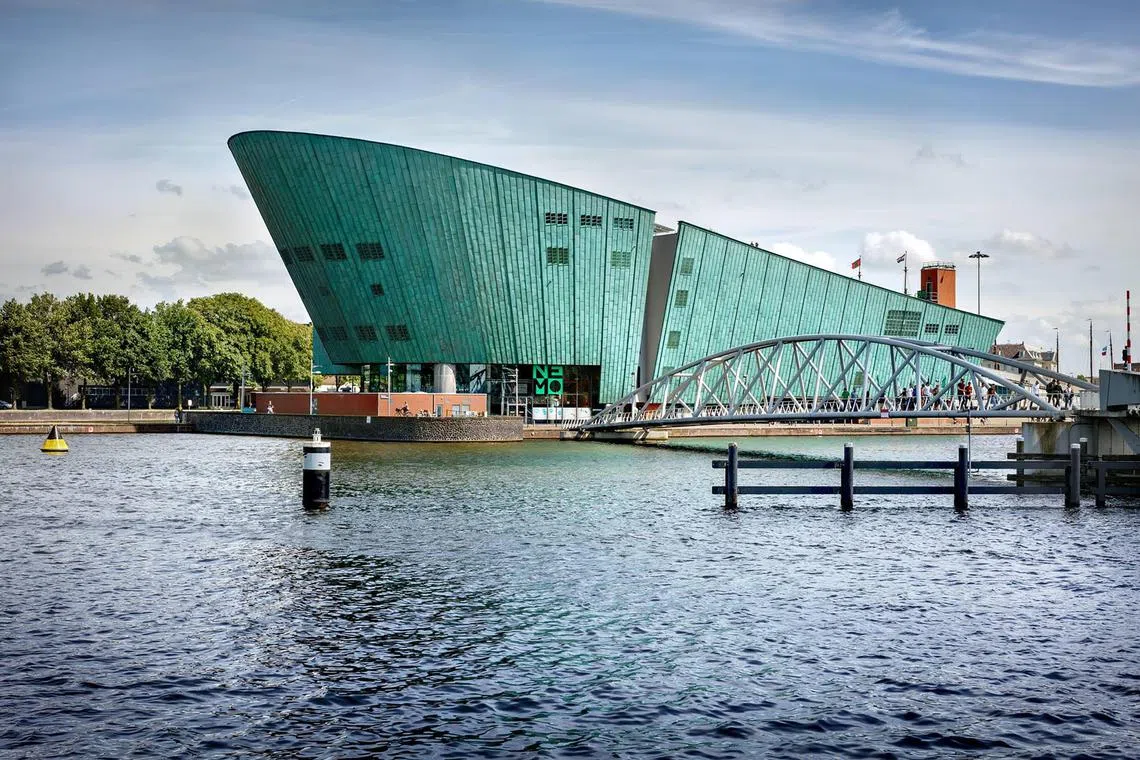
Nemo Science Museum has a free rooftop terrace with a great view.
PHOTO: NEMO SCIENCE MUSEUM/FACEBOOK
The impressive copper-green Nemo Science Museum (Oosterdok 2, 1011 VX; str.sg/r3g7
Rising out of the water, it is striking both by day and by night, especially when approached on one of the city’s many canal cruise boats. Do not just take in the hulking five-storey structure from afar, as its rooftop garden boasts unparalleled panoramic views – and it is free.
Italian architect Piano, who envisioned it as a piazza overlooking the city when the museum was built in 1997, returned to revamp the roof as part of Amsterdam’s 750th anniversary celebrations.
On a day with nice weather, you can bask in the sun with a cuppa while people-watching. At night, you can catch film screenings or gaze up at the stars.
Eye Filmmuseum
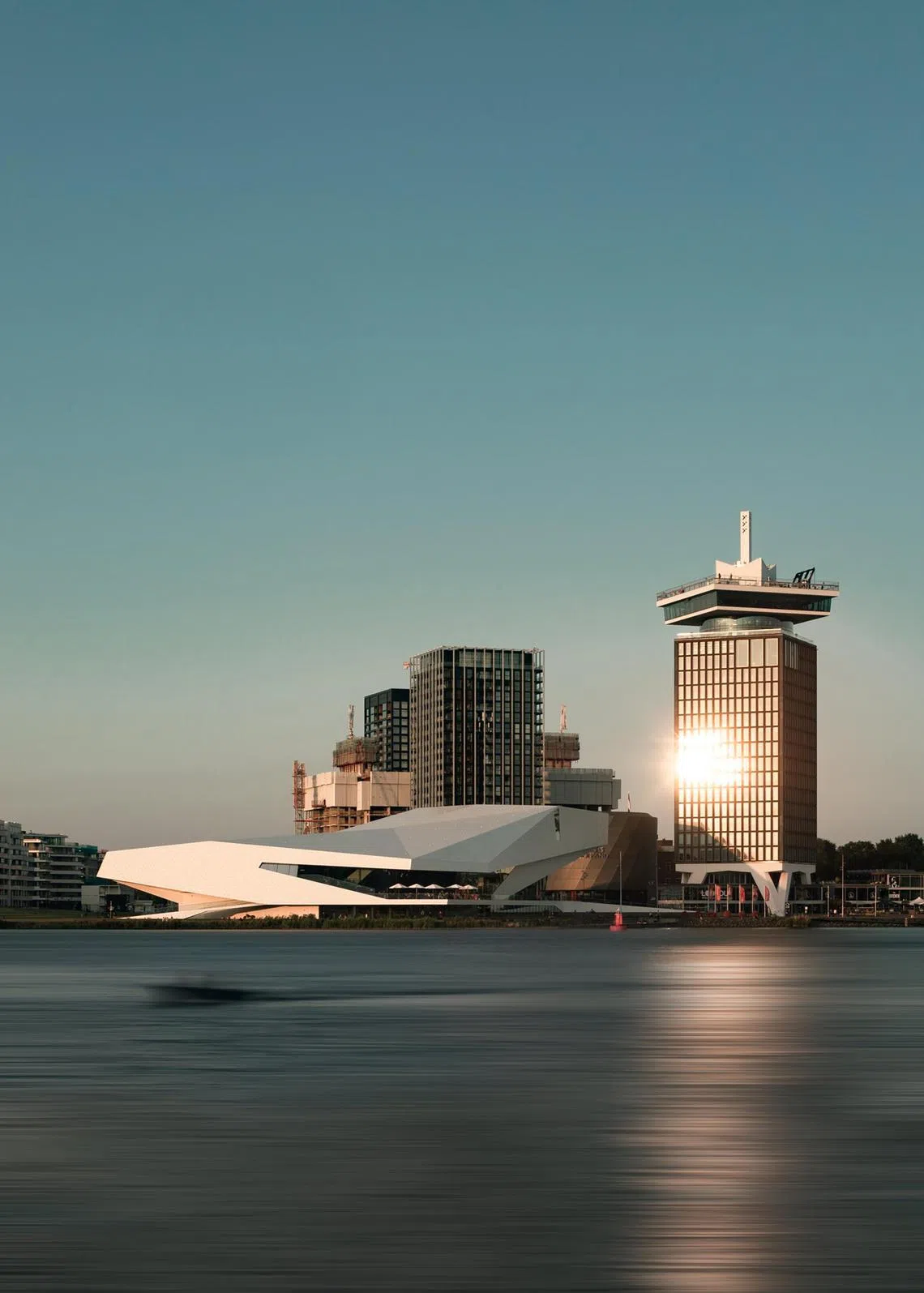
Eye Filmmuseum looks like a crystal shard.
PHOTO: EYE FILMMUSEUM/FACEBOOK
Across the water from Amsterdam Central Station sits the eye-catching Eye Filmmuseum (IJpromenade 1, 1031 KT; str.sg/xXJK
The many-sided sleek white structure with expansive glass looks like a smooth piece of crystal, an oyster or even a UFO, depending on how it catches the sun.
A play of light and dark, the building is befitting a museum devoted to all things cinema, with 55,000 films from all genres in its collection.
Completed in 2012 by Viennese firm Delugan Meissl Associated Architects, it boasts four cinemas, an exhibition space, a quirky gift shop of film posters and other memorabilia, and a cavernous bar-restaurant facing the water.
The indoor tables are fine, especially on one of the rainy days for which the country is famous, but the outdoor terrace is where you get the best views.
Stedelijk Museum Amsterdam
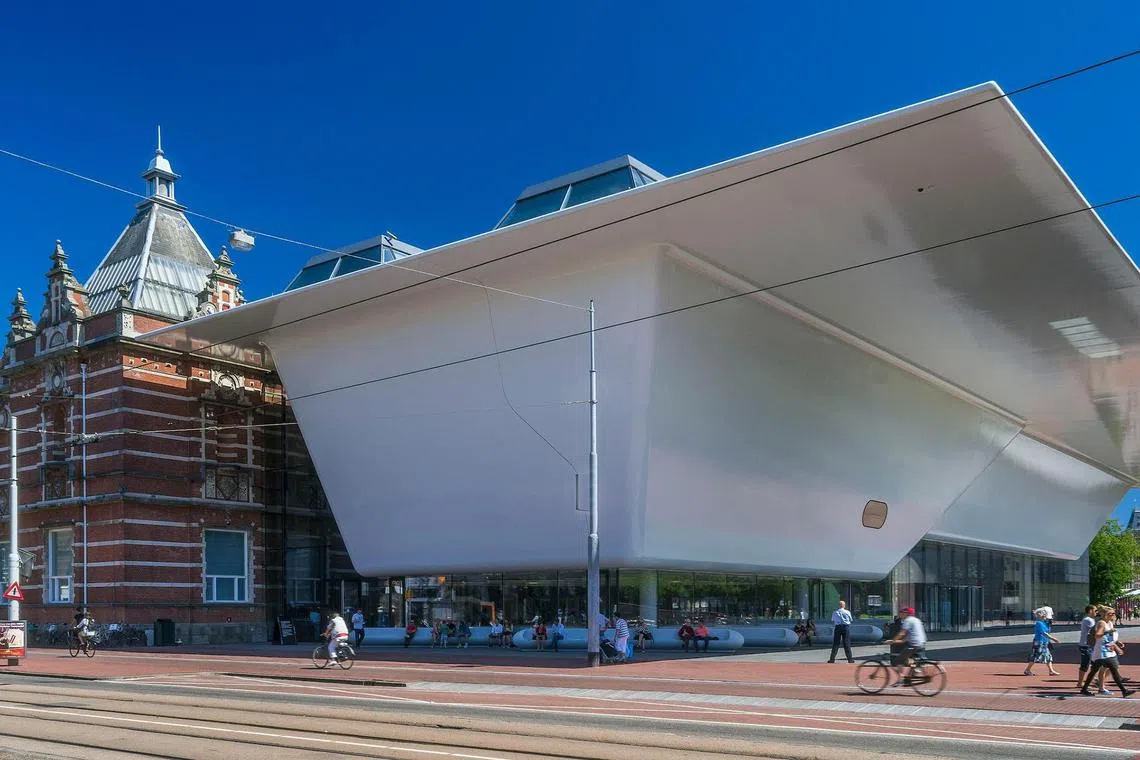
Stedelijk Museum Amsterdam is affectionately known as The Bathtub.
PHOTO: STEDELIJK MUSEUM AMSTERDAM/FACEBOOK
Known also as The Bathtub – pretty obvious why, once you set eyes on its fluid, rectangular white form – the Stedelijk Museum Amsterdam (Museumplein 10, 1071 DJ; str.sg/gAwS
The minimalism of the tub, which appears to float above the grass, contrasts strongly with the original 1895 brick structure. However, once you are inside, the dynamic open galleries merge old and new seamlessly. You hardly notice which part of the building you are in.
After exploring the museum’s extensive modern art collection, take a break in the lobby on the specially commissioned Stedelijk Chair. Sitting on the stylish aluminium chair by Dutch designer Sabine Marcelis, the feeling is not unlike sliding against the smooth curves of a bathtub.
Valley
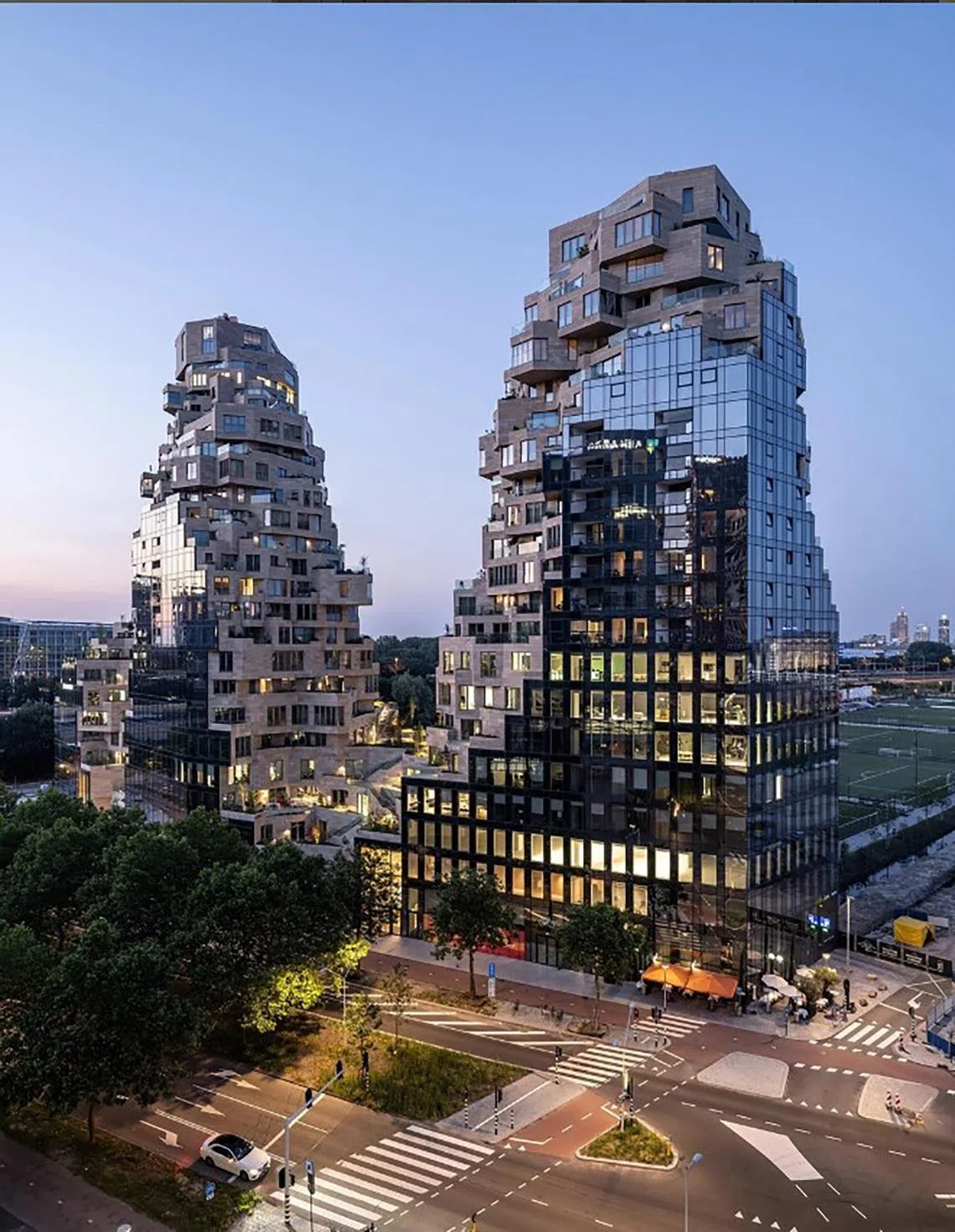
Valley in the business district stands out with its organic jagged facade.
PHOTO: MVRDV/INSTAGRAM
One of the standout structures in the business district of Zuidas, with its many anonymous skyscrapers, Valley (Beethovenstraat 517, 1083 HK) looks like a jagged, organic rock formation bursting forth from a shiny glass facade.
Since its opening in 2022, it has become an instant urban landmark and is the first mixed-use development in the area. Within its three towers of varying heights are 196 apartments, seven storeys of offices and a number of stores, restaurants and cultural venues.
Various areas across different levels are accessible to the public via a footpath that zig-zags up from the street level to a green valley between the towers. Explore the labyrinth of stairs and terraces, which have over 13,000 plants integrated into the green design.
After that, head up to sky bar and restaurant Twentysix, on the 26th floor of the tallest tower, for a cocktail with a view.
The Amsterdam School of architecture
For two decades from around 1910, the Amsterdam School of architecture turned nondescript bricks into bold expressive structures. It was not literally a school, but rather a club of friends with socialist ideals who kick-started the movement to impart flair and whimsy to public housing and civic buildings.
The rectangular red blocks were artfully used to transform structures into rounded forms, which were given names like The Ship (Het Schip) and The Jewel (Het Sieraad).
Het Schip
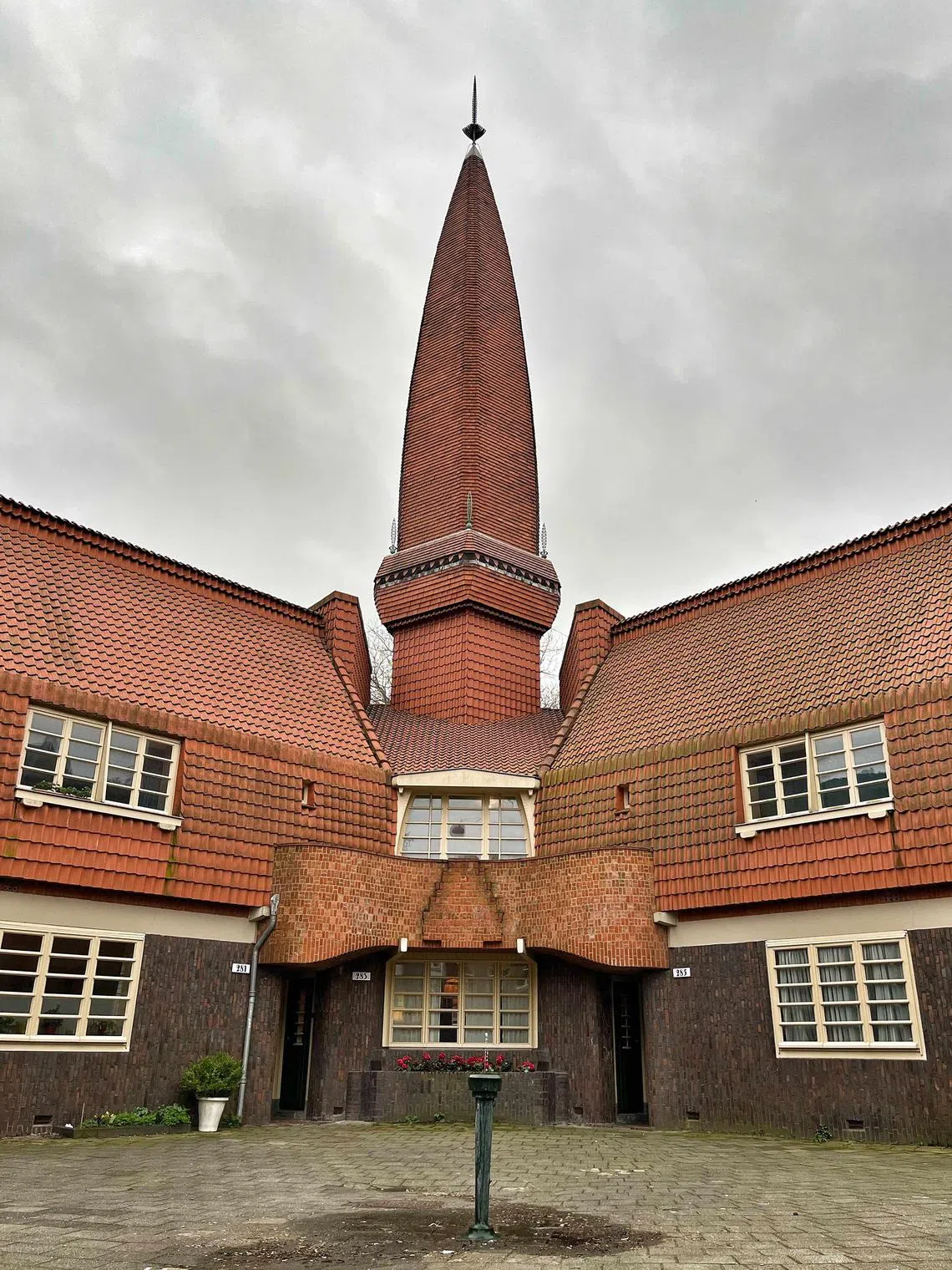
Het Schip is one of the most iconic examples of the Amsterdam School of architecture.
ST PHOTO: SUZANNE SNG
Tucked away in a quiet neighbourhood, Het Schip (Oostzaanstraat 45, 1013 WG; str.sg/A8Rt
Despite its ornate masonry, swooping lines and playful spires, it is not just about aesthetics, but also about ideals. Built as social housing, it embodied the socialist dream of giving workers beautiful, dignified homes.
Every detail, from the rounded windows to the decorative chimneys, reflects a belief that good design should be for everyone, not just the elite.
The apartments were relatively spacious and included separate rooms, as opposed to the one-room dwellings common then, as well as flush toilets. A reconstruction of the apartment can be seen in the on-site museum.
Try to time your visit for 3pm on Tuesdays to Sundays, as there is an informative guided tour in English included in the admission ticket. The tour includes the former post office, which the working class previously had little access to.
After exploring the inside, stroll around the perimeter as well as courtyards, but bear in mind that people still live in the 82 apartments, and respect their privacy. Keep an eye out for specially designed street furniture, such as a public urinal and street kiosks.
De Dageraad
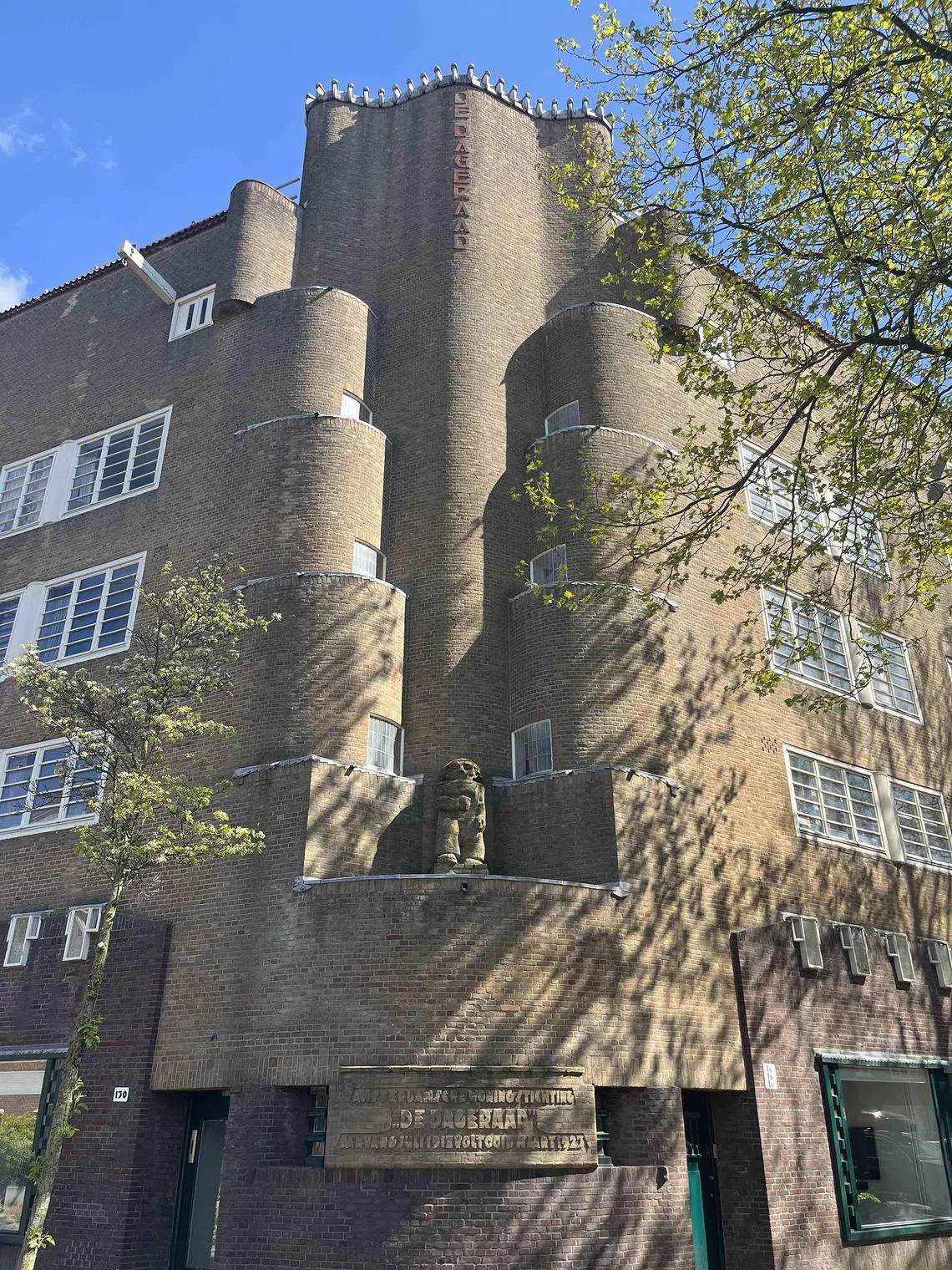
De Dageraad features swooping curves and hardly any right angles.
ST PHOTO: SUZANNE SNG
Brickwork is turned into an art form at De Dageraad (Burgemeester Tellegenstraat 128, 1073 KG; str.sg/geYd
Playful features include sculptures on the facade, roof profiles which undulate like waves and windows with curtain-like details.
There is a tiny museum about the history of De Dageraad in one of the buildings, which still house private residences.
Included with the ticket is a one-hour guided tour in English at 3.30pm on Thursdays to Sundays. The tour takes you around the area, which has other notable buildings in the Amsterdam School style, including a charming circular courtyard surrounded by houses and a former library, as well as two schools which have been combined into one.
Het Sieraad
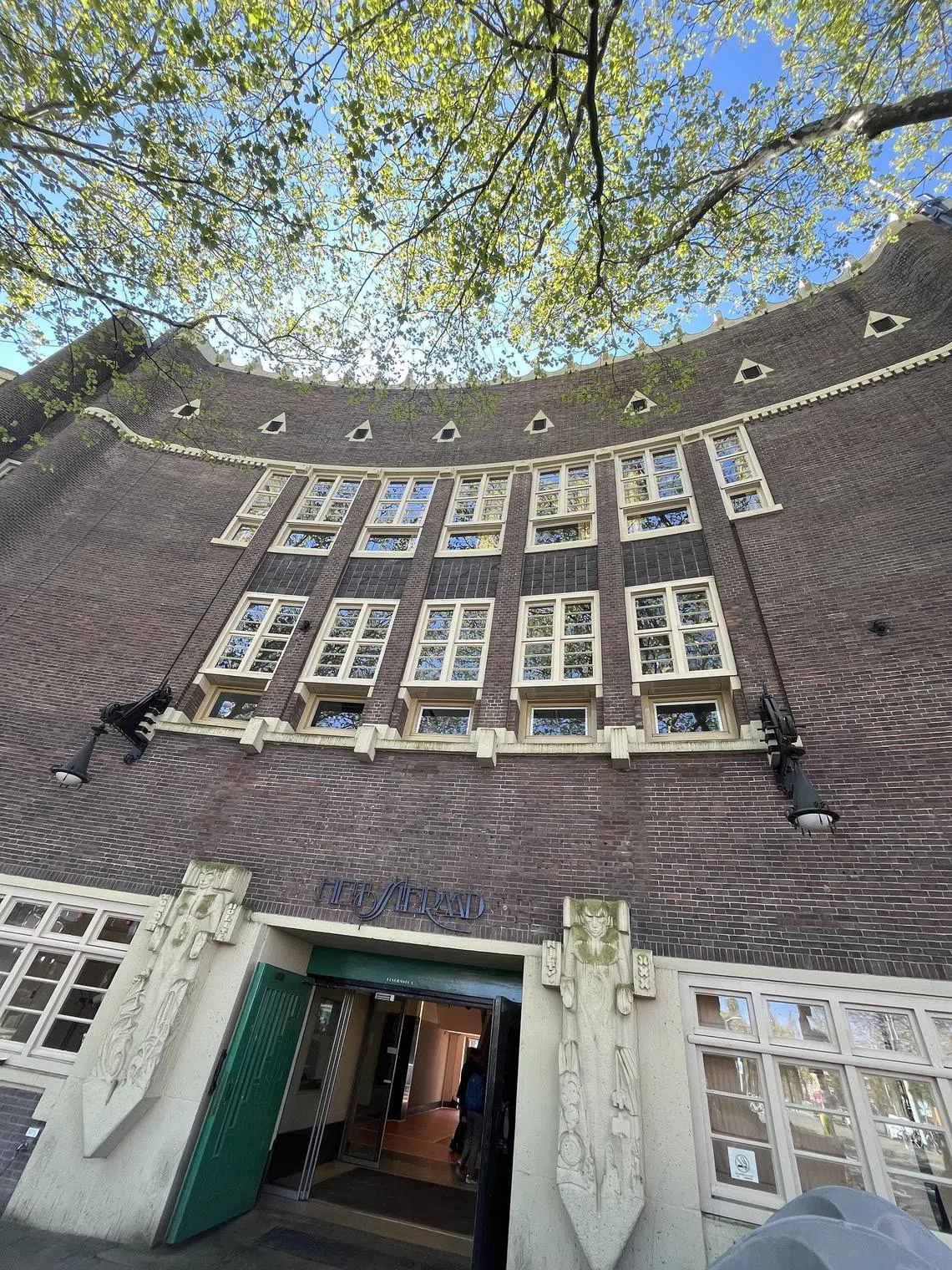
The fortress-like Het Sieraad is a prime example of the Amsterdam School of architecture.
ST PHOTO: SUZANNE SNG
From the outside, Het Sieraad (Postjesweg 1, 1057 DT; str.sg/jT5C
These days, young people flock to the converted event space for a different reason – its club nights. Strobe lights, pulsing techno music and a modern glass roof over the cavernous atrium breathe new life into the historic space.
The architecture is just as commanding by day. Light pours in through the roof and soaring stained-glass windows, and you can admire the original tilework up close. If you want to have a poke around, there is free access to the public on Tuesdays from 11am to 5pm, but check before going, as the space may be booked for private events.
Exoticism
Besides the 17th-century canal houses, Amsterdam also has a street of quirky houses at Roemer Visscherstraat. An easy five-minute stroll from Stedelijk Museum, it offers a charming tour of European architectural styles.
Built in 1894 by Dutch architect Tjeerd Kuipers, the houses represented a romanticised longing for the faraway, in a style that is now called Exoticism.
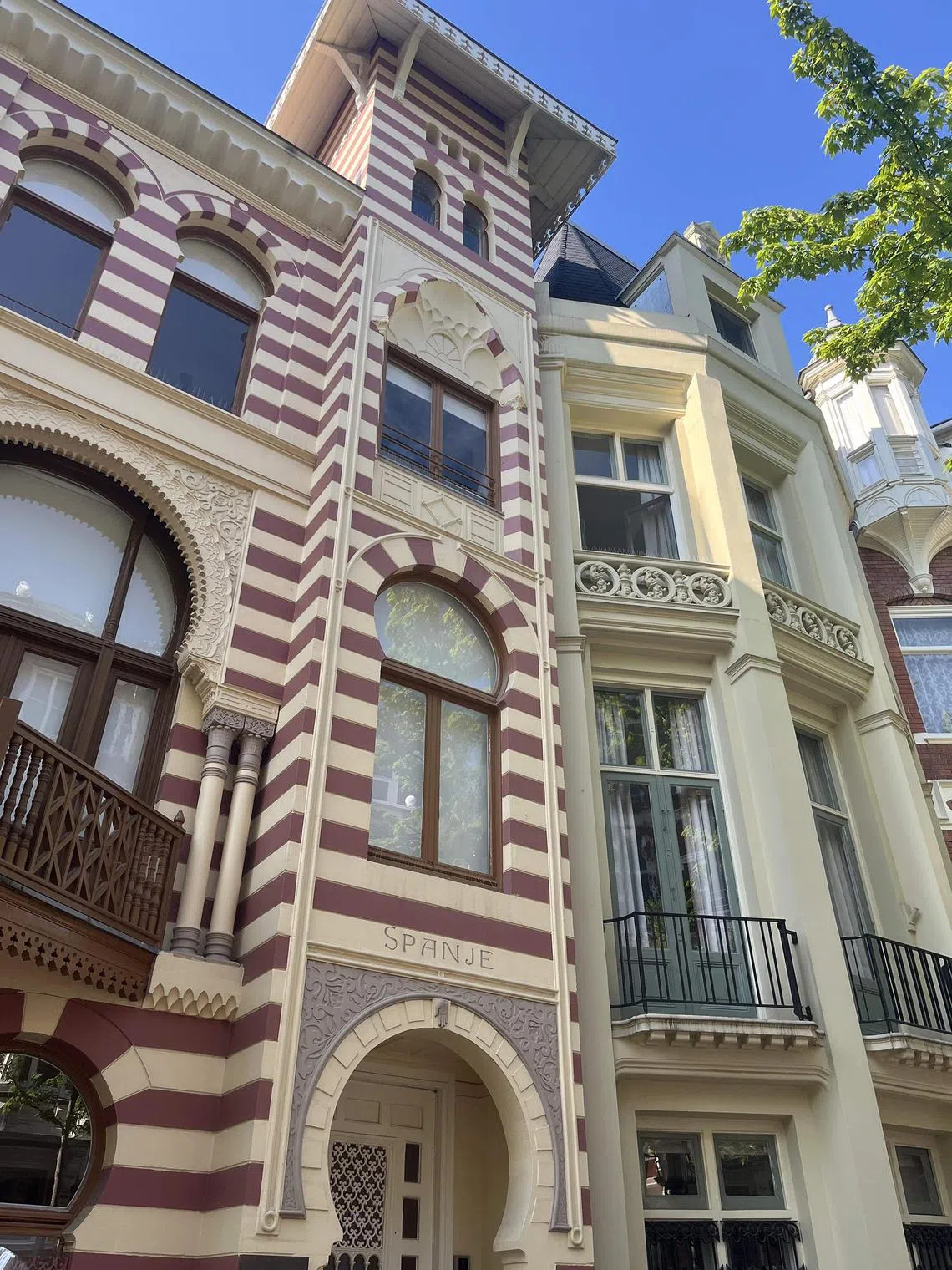
The architecture styles of seven European countries are represented in this row of houses known as Zevenlandenhuizen. Seen here are Spain (left) and France (right).
ST PHOTO: SUZANNE SNG
Zevenlandenhuizen (Roemer Visscherstraat, 1054 EX) – “Houses of Seven Countries” – is a row of seven mismatched houses. Starting at No. 20, you can take a whirlwind tour of Germany, France, Spain, Italy, Russia, The Netherlands and, finally, England, which now houses a hotel.
The German house features Gothic revival flourishes, while the French one channels Renaissance elegance. The Spanish house leans into Moorish influences and the Italian one brings to mind a palazzo with its classical columns and symmetry.
The onion-shaped dome on top of the next house makes it unmistakably Russian, while the Dutch house is a nod to the city’s 17th-century canal houses. The last house looks like a typical cottage in the English countryside.
Global Design is a series that explores design ideas and experiences beyond Singapore.
Suzanne Sng is a writer, editor and architecture nerd who has been based in Amsterdam for the past five years.

